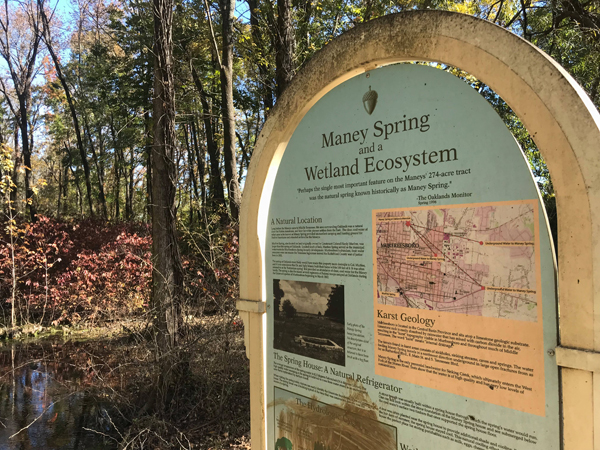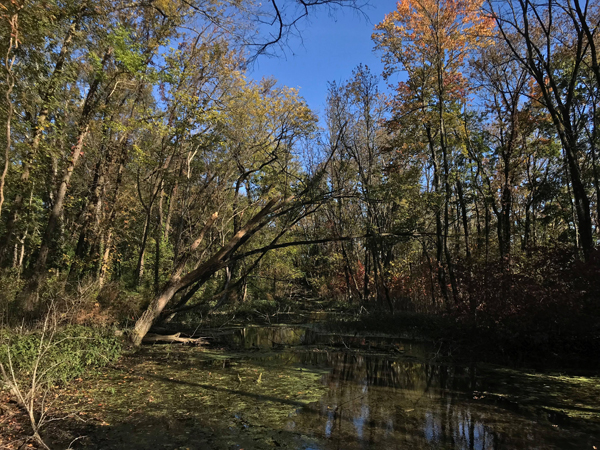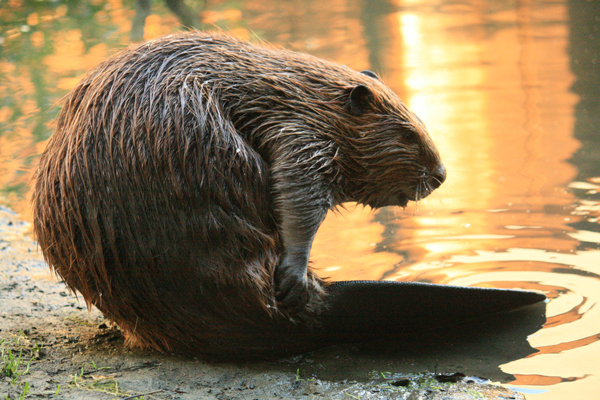
In early October, United States Department of Agriculture’s Animal and Plant Health Inspection Service trapped and lethally removed two beavers from the Oaklands Sinking Creek wetlands in Murfreesboro after flooding concerns.
According to USDA Nashville District Supervisor Blaine Hyle, the department’s Wildlife Services conducted 32 site visits to the wetlands from April to the beginning of October in attempts to lower the water levels. Hyle stated that Murfreesboro City Parks officials first requested a USDA site visit in April to assess the situation.
“Upon inspection, it was determined that a medium-sized beaver dam was backing water up very near neighboring private property,” Hyle said. “Additionally, city roads personnel expressed concern about water backing up another ditch onto the new police parking lot on North Highland.”
After the assessment, Wildlife Services installed a “beaver pond leveler,” which is a device that allows water to be siphoned from the pond without the beavers realizing. In June, a trench was torn in the dam, and a flow pipe was installed from the upstream side to the downstream side of the dam. The pipe is meant to allow water to flow freely, lowering its level. Hyle said that Wildlife Services personnel monitored the leveler for two weeks but found that surplus rainfall was not allowing sufficient draining. Additionally, by the end of the two weeks, beavers had discovered the pipe and chewed it in half.
USDA then installed a second leveler, which was double the size of the first. This pipe was also buried in the stream bed to avoid detection from the beavers. After another week of monitoring, it was found that the water levels were not lowered sufficiently, leading to a Wildlife Services worker breaching the dam twice weekly in an attempt to keep water levels low. Each night, however, the beavers repaired the dam.
In late September, the city finally made the call to lethally remove the beavers using industry-approved body grip traps. This action was then carried out in early October. The cost of all the Wildlife Services visits throughout the month totaled over $3,500.
“It should be noted that relocation of beavers is strictly controlled by Tennessee Wildlife Resources Agency and in almost all cases, prohibited by the agency,” Hyle said.
Parks and Recreation Superintendent Rachel Singer said that the removal of the beavers was the best option available.
“Last November, we did discover that a pretty significant beaver dam had been built in the Sinking Creek wetlands,” Singer said. “It was a concern from the beginning because we have property owners, we have a trail system in that park and we have roads and bridges.”

Singer said that the city was in close talks with USDA wildlife biologists for months and worked to decide the best solution for the rising water levels of the creek to protect both area property and the other wildlife of the wetlands.
Still, the action has upset some Murfreesboro residents who are a part of the recently formed Friends of the Oaklands Wetlands group.
MTSU English professor and founding member of the Oaklands Wetlands group Justyna Kostkowska started a petition in 2017 in an attempt to protect the Oaklands Park wetlands from the development of townhomes by a private developer. The city eventually purchased the property that the proposed townhomes were to be built on, promising the preservation of the natural site. Now, Kostkowska feels that the city has acted without properly consulting with residents who care about the wildlife that inhabits the wetlands.
“We have members who are biologists and environmental consultants, and we have resources that the city can use,” Kostkowska said. “The beavers have been there since the previous summer. [Beavers] have expanded the pond, and the place was flourishing. The habitat was increased.”

According to Danielle Brown, another member of the Friends of the Oaklands Wetlands group and a biology lecturer at MTSU, the city should have continued to explore additional options for the flooding issue.
“The frustrating thing for us is that we managed to get the city to agree to buy the wetlands from the seller, and the idea was that it was going to be a functioning wetlands,” Brown said.
Brown said that she researched some techniques to alleviate issues with beavers and found some solutions that, she says, the city should have attempted.
According to “Techniques for Mitigating Human/Beaver Conflicts in Urban and Suburban Environments,” a document from the Animal Alliance of Canada that Brown sent to the city, an additional measure to protect the beaver pond leveler is a domed intake fence that protects the entrance of the pipe and stops beavers from seeing or hearing the water entering the pipe.
“By the time I had sent the document to the city, [the removal] had already been done,” Brown said.













